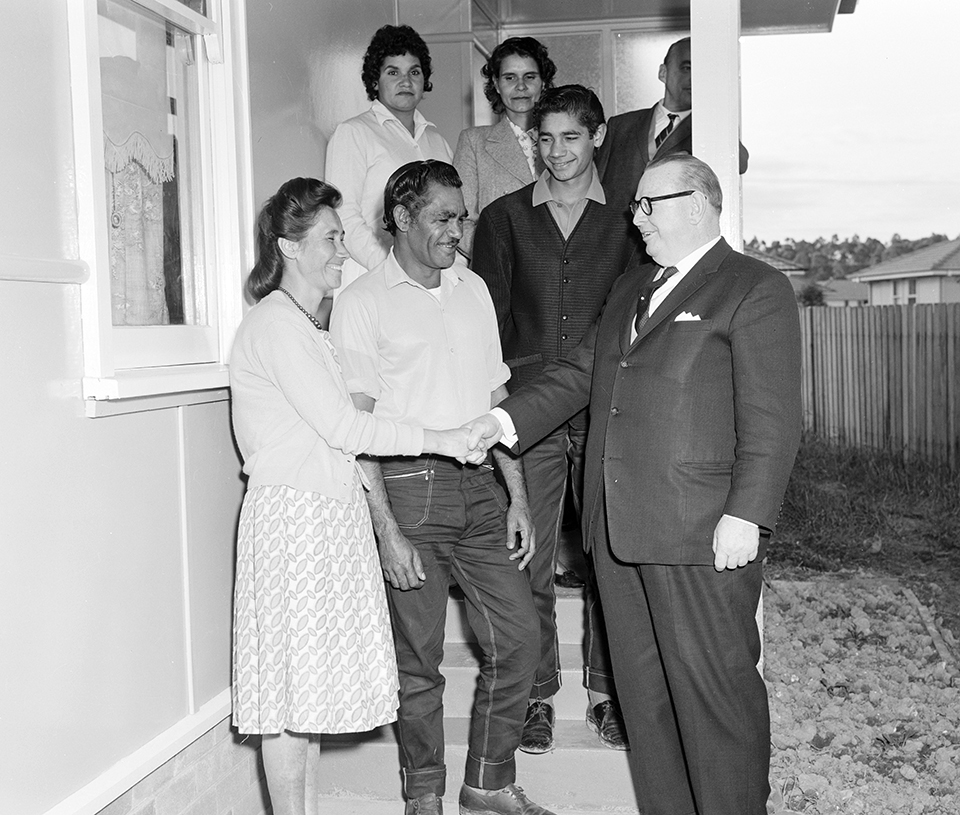The Dictionary of Sydney was archived in 2021.
McLeod family and Chief Secretary, Mr C A Kelly at opening of Housing for Aborigines scheme, Green Valley, 5 July 1963

From the collections of the
(Mitchell Library)

